Vision therapy is often and effectively used for strabismus (commonly called esotropia or exotropia) If you have eyes that do not properly work together, you may have had eye surgery Unfortunately for many, eye surgery is not always effective in treating strabismusNonSurgical Strabismus Care Sometimes prescription glasses or contact lenses alone can improve strabismus Frequently, optometric vision therapy is needed to teach the brain how to use the eyes together as a team We have helped people with strabismus as young as 4 1/2 months old to 90 years young!Patients who received officebased vision therapy for intermittent exotropia in a private optometric clinic were reviewed Patients with intermittent exotropia treated with and without strabismus

Vision Therapy Philippines At Vision Science Institute A Vision Therapy Success Story Strabismus Eye Misalignment Facebook
Strabismus exotropia vision therapy
Strabismus exotropia vision therapy-Exotropia — a common type of strabismus — is the outward deviation of an eye (eye turns away from the nose) When the eye turns outward only some of the time, it is called intermittent exotropia Most exotropia is intermittent In many cases, the eye turn might only be visible during stressful situations or when the person is tired, ill orVision therapy will train you and help you gain amazing eye control and awareness so that you can easily straighten and use your eyes together again, but the strabismus doesn't usually go away completely unless intervention happens extremely early or it is a mild case



Do You Know About The Strabismus Here S What To Do
Vision therapy for exotropia Our doctors thoroughly evaluate exotrpia and provide treatment options, including nonsurgical vision therapy or a referral to a surgeon if it is warranted Exotropia is the easiest type of strabismus to treat with vision therapy, saving the patient from the risks and uncertainties associated with strabismus surgeryVision Therapy for Strabismus (Eye Turns), Exotropia, and Esotropia in Austin & San Antonio, TX Strabismus, often referred to as an eye turn or crosseye, is a condition that describes the improper alignment of the eyes The deviation of one eye is often due to the lack of coordination between the muscles of the eyes Strabismus (Eye Turns) Strabismus is a general term that describes an eye turn The eye turn can be inward ( esotropia ), outward ( exotropia ), or upward (hypertropia) While some eye turns are constant and obvious, others can be intermittent and subtle This condition is often present from birth but can develop over time as well
In middle school, my eye started to drift outwards , mostly happening whenever I was very sick or tired Of course, I was bullied all throughout junior high and high school for thisIt's actually more common now than it used to be Exotropia can occur intermittently or be constant You can read all about it below, as well as watch Dr Julie go into great detail in thisIn most severe cases, strabismus surgery is required to align the eyes, yet it is often followed with vision therapy exercises to strengthen the eyes and teach the brain how to use both eyes together In occasional squint or mild strabismus, vision therapy has been proven to correct the misalignment completely
Some types of strabismus can be treated with eye drops that temporarily blur your good eye to strengthen the other eye Sometimes you can treat strabismus with a drug that weakens your eyeAbout 50% of all intermittent exotropia falls into this category1,2,3 In recent years, there has been abundant literature supporting the fact that adult strabismus surgery improves cosmesis and binocular function4,5,6,7 Optometric literature has shown the efficacy of vision therapy for exotropia, even in those with anomalous correspondenceEight patients received strabismic surgery before the initiation of vision therapy, and they all underwent only one surgery All patients treated with surgery had intermittent exotropia before surgery The average time between the surgery and the start of vision therapy was 29 ± 13 years




Management Of Intermittent Exotropia Of The Divergence Excess Type A Teaching Case Report The Journal Of Optometric Education
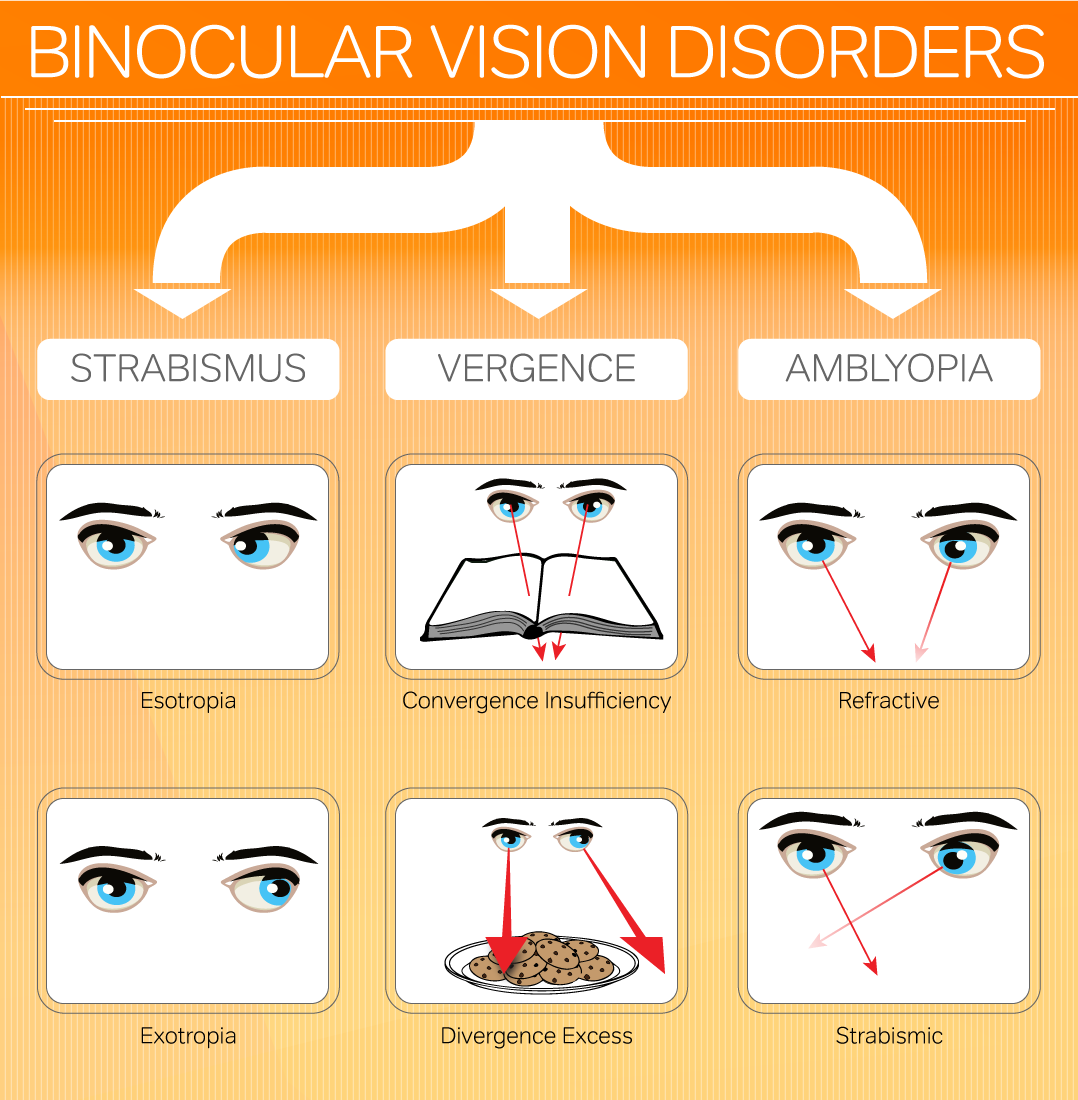



Signs And Symptoms Of Binocular Vision Problems
I am a 29f with intermittent exotropia I was first diagnosed at age 3 with an inward eye turn and double vision I had two surgeries and my eye was corrected!Hollywood Eyes Dr Elise Brisco, OD, CCH talks about treatment!Treatment for exotropia aims to ensure proper vision in both eyes and to straighten the eyes Among the treatment options for exotropia are Glasses ;




Visual Information Processing Evaluation And Orthoptic And Vision




Esotropia Crossed Eyes Lazy Eye Or Squint Pediatric Ophthalmology Pa
Background Horizontal ocular deviations in which the visual axis deviates outward are called exodeviations Children with exodeviations typically present during the first decade The prevalence is approximately 1 percent in children younger than 11 years1 Intermittent exotropia is a common form of strabismus occurring in about 25% of all strabismic cases and in 1% of theWith or without corrective lenses — is the most effective and noninvasive treatment for Strabismus In a Vision Therapy program, eye exercises, lenses, and/or other therapy activities are used to treat the brain and nervous system which control the eye musclesCan vision therapy improve eye alignment in exotropia?




Pdf A Tale Of Intermittent Exotropia And Amblyopia Does Vision Therapy Help




Exotropie Behandeln 9 Schritte Mit Bildern Wikihow
Strabismus can lead to double vision Left untreated in early childhood it can lead to vision loss, crossed or unaligned eyes Amblyopia (Lazy Eye) occurs when the brain receives separate images, leading to double visionIntermittent Exotropia Martin H Birnbaum, OD Originally published in the Journal of Behavioral Optometry, Volume 1, Issue 1 Intermittent exotropia is one of the most commonly encountered varieties of strabismus Treatment is successful in approximately 90% of cases presenting for optometric vision therapy, according to welldocumented studiesSigns of strabismus Exotropia – an eye points outward too far, out of alignment with the other eye;
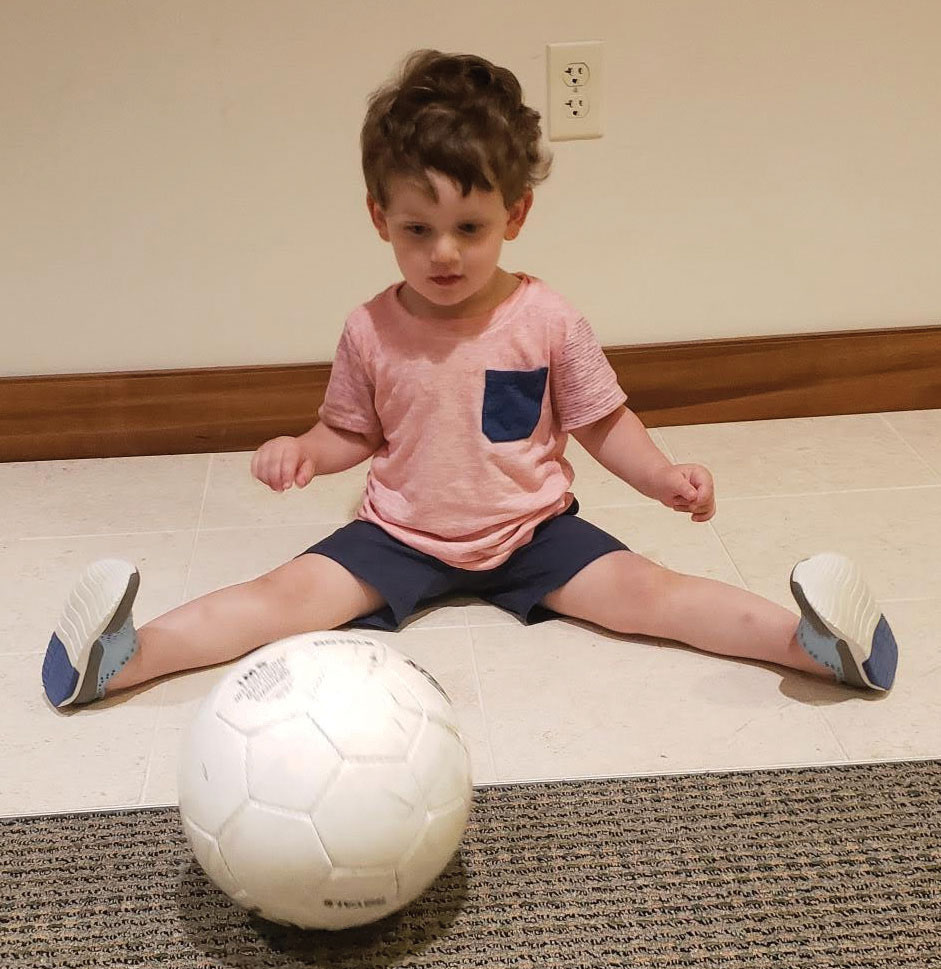



Sizing Up Strabismus
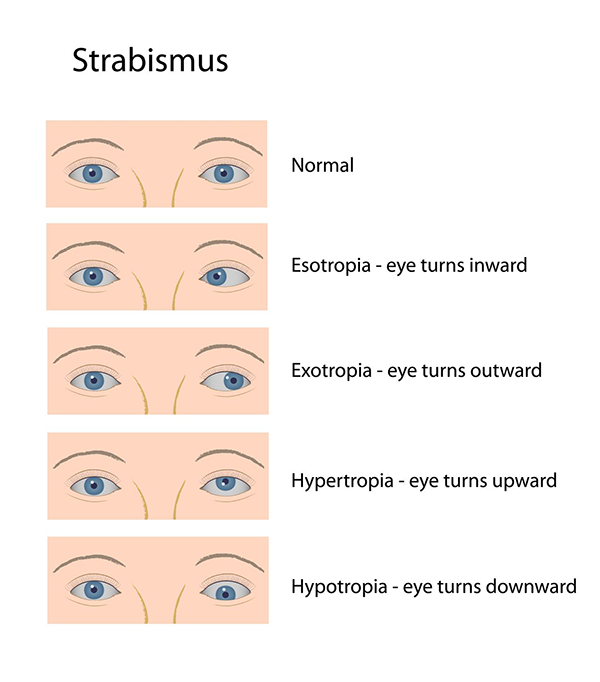



Sparta Strabismus Treatment Strabismus Treatment In Sparta Strabismus Symptoms In Sparta
Because strabismus is a very complicated condition, we choose to do a more conservative approach with Vision Therapy The purpose of Vision Therapy is to assist patients in achieving maximum function with what they have Our principle goal is to provide an opportunity for the eye to function at its best capacity The fact that Vision TherapyStrabismus is defined as a misalignment of the eyes There are several types, but the two most common types are Esotropia (where an eye turns inward, toward the nose) and Exotropia (where an eye turns outward, toward the ear) When both eyes are not pointing at the same object at the same time, the individual may experience double vision Eight patients received strabismic surgery before the initiation of vision therapy, and they all underwent only one surgery All patients treated with surgery had intermittent exotropia before surgery The average time between the surgery and the start of vision therapy




Strabismus Minnesota Vision Therapy Center
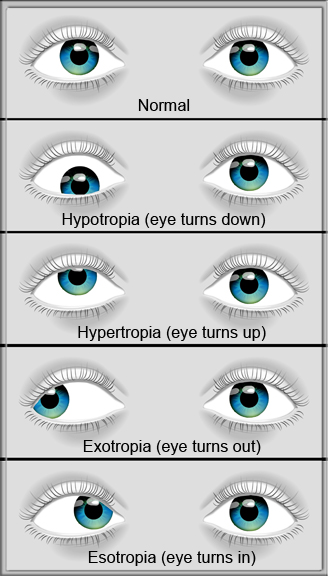



Strabismus Amblyopia Neuro Vision Development Center
The success of strabismus surgery is much higher when vision therapy is performed before and after the surgery Read more about strabismus surgery Types of Strabismus Eye turn OUT – Exotropia When one eye turns out toward the ear (away from the nose) while the other eye remains aligned, this is called exotropia This condition usually appears between age 26,Exotropia is a form of strabismus (eye misalignment) in which one or both of the eyes turn outward It is the opposite of crossed eyes, or esotropia Exotropia may occur from time to time (intermittent exotropia) or may be constant, and is found in every age group See figures 1 and 2 Fig 1 Eyes alignedPatients who received officebased vision therapy for intermittent exotropia in a private optometric clinic were reviewed Patients with intermittent exotropia treated with and without strabismus surgery were both included The pretherapy baseline data were compared to the reevaluation data obtained at the last therapy session




Vision Therapy For Exotropia Lynn Hellerstein




Exotropia American Association For Pediatric Ophthalmology And Strabismus
4 Strabismus Esotropia and Exotropia Proper alignment of the visual axes of the eyes is necessary for normal binocular vision and highlevel stereopsis The tendency for the eyes to deviate from each other can be classified as "latent" when the eyes are alignment is not maintained by fusion Latent deviation of the eyes isEvaluations and Vision Therapy solutions for strabismus, eye turns, amblyopia & lazy eye VisionCDLcom / STRABISMUS, EYE TURNS, AMBLYOPIA AND LAZY EYE Treatment Options for Cross eye, Wall eye, Esotropia, Exotropia, and Hypertropia By Alan P Pearson OD MEd PhD FCOVD ©1018 Vision Clinics of Development & LearningSurgery on the eye muscles to realign the eyes;



1



Strabismus Ananthaksha Super Speciality Eye Hospital
I have extropia in my left eye by about 8 prism diopters (about 5mm) and am wondering if vision therapy can improve the misalignment I can force my eyes together by seeing double but still cannot seem to get the images to fuse, mainly because I have a different prescription (plus 35) in The American Optometric Association defines strabismus as a "condition in which both eyes do not look at the same place at the same time" It can present as one eye drifting inward (esotropiaThe treatment of alternating comitant exotropia requires the use of optometric vision therapy, which may include the use of lenses and/or prisms In some cases, surgery may be required in conjunction with preand postsurgical optometric vision therapy, which incorporates the prescription of specific treatments in order to equate monocular skills




Strabismus In Cromwell Ct 4d Vision Gym




Pin On Lazy Eye Exercises
Strabismus and Exotropia treated with Vision Therapy Strabismus and Exotropia treated with Vision Therapy Watch later Share Copy link Info Shopping Tap toEsotropia and exotropia are the most common types of strabismus Exotropia is when one eye drifts outwards towards the ear, and esotropia is when one eye drifts in towards the nose Strabismus treatment options include vision therapy, eye muscle surgery, and glasses Vision therapy can be very helpful for mild to moderate strabismus, but largerWith or without corrective lenses — is the most effective and noninvasive treatment for Strabismus In a Vision Therapy program, eye exercises, lenses, and/or other therapy activities are used to treat the brain and nervous system which control the eye muscles




Strabismus Misaligned Eye Treatment Envision Eye Centre




Squint Treatment Exotropia Neo Eye Clinic
See Eye Muscle Surgery as Treatment for Strabismus, including Intermittent Exotropia A Parent's Choice re Treatment for Intermittent Exotropia Read what several parents have written regarding making the choice between Strabismus Eye Muscle Surgery or Vision Therapy for Intermittent Exotropia and Lazy EyeSigns of strabismus Exotropia – an eye points outward away from the nose Esotropia – an eye points inward towards the nose Hypertropia – an eye points up more than the other eye Hypotropia – an eye points downward more than the other Amblyopia, often called "lazy eye", is poorer visual acuity in one eye compared to the other Exotropia refers to a type of strabismus (eye misalignment) in which either one or both of the eyes turn outward It is not the same as esotropia, in which either one or both of the eyes turn inward Exotropia is a common condition It comprises 25% of all ocular misalignment cases in young children




Fixing Aloise S Gaze Strabismus Wow Vision Therapy Youtube




3 Eye Exercises For Strabismus Healthline
With or without corrective lenses — is the most effective and noninvasive treatment for Strabismus In a Vision Therapy program, eye exercises, lenses, and/or other therapy activities are used to treat the brain and nervous system which control the eye muscles Vision Therapy produces both positiveMost patients find relief in seeing a Developmental Optometrist for Vision Therapy who specializes in helping the brain use the visual input from both eyes, together This has a lasting effect for the patient and can often lead to higher selfesteem and reduced overall symptoms of esotropia strabismusStrabismus (crossed eye) occurs when both eyes are unable to properly team and align together As a result, one or both eyes will appear to crossin or wanderout of alignment Occurring in 24% of the population, strabismus represents a dysfunction in the visual system affecting proper coordination of the two eyes, leading to defective depth
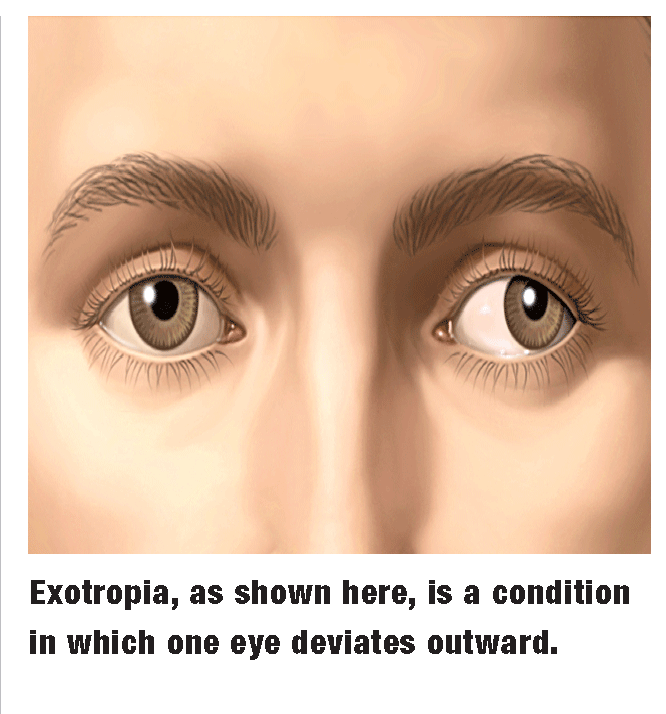



Do You See A Pattern



Do You Know About The Strabismus Here S What To Do
VISION THERAPY SUCCESS STORY Strabismus – Exotropia (eye turn outward) I could still remember her first visit to the clinic few months ago A case of Alternating Exotropia with oculomotor dysfunction and lack of stereopsis She was already preparing her self for surgery coz she thought it was the only option even if deep inside she was afraid to Vision therapy, with or without eyeglasses, eye patching, drops, or surgery is the most effective approach in treating constant exotropic strabismus Intermittent exotropia This the most common form of exotropia, occurs when the eye turn is only present occasionallyStrabismus is a failure of the two eyes to maintain proper alignment and work together as a team If you have strabismus, one eye looks directly at the object you are viewing, while the other eye is misaligned inward (esotropia, "crossed eyes" or "crosseyed"), outward (exotropia or "walleyed"), upward (hypertropia) or downward (hypotropia)




3 Eye Exercises For Strabismus Healthline




Pdf Optometric Vision Therapy In The Management Of Consecutive Intermittent Exotropia With Dissociated Vertical Deviation And Anomalous Correspondence A Case Study Semantic Scholar
Which also will be addressed with vision therapy Schedule an Appointment Amblyopia Amblyopia is a developmental neurological disorder of binocular vision resulting in reduced vision and depth perception Exotropia is a form of strabismus which is an eye misalignment that turns either one or both of the eyes outward It is thought that only 1 to 2% of the population have exotropia, however;Vision Therapy — strabismus treatment without surgery;




Pdf Outcome Of Strabismus Surgery And Vision Therapy In A Case Of Intermittent Exotropia




Pdf Orthoptic Treatment In The Management Of Intermittent Exotropia
Numerous case reports have been published documenting the treatment of strabismus patients with vision therapy The most recent was published in August 11 in the journal Optometry by Peddle and Steiner who discussed two cases of adults with moderate sized intermittent exotropia (eyes turned outward to the wall) Both patients also had asthenopia (eye fatigue and discomfort), headaches, and/or diplopia (double vision)Conclusion The data suggests that vision therapy is more effective than surgery in patients with smaller angle intermittent exotropia and should be considered part of the treatment regimen for patients who receive surgery Garriott R, Heyman C, Rouse M Role of optometric vision therapy for surgically treated strabismus patientsEye turns, are also known as strabismus, and affect over 1 in babies and toddlers With early detection and eye care treatment, with eyeglasses and vision therapy, the eye turn can often be resolved, without relying on complicated eye surgeries




Strabismus Surgery For Misaligned Eyes Crossed Eyes Or Wall Eyes
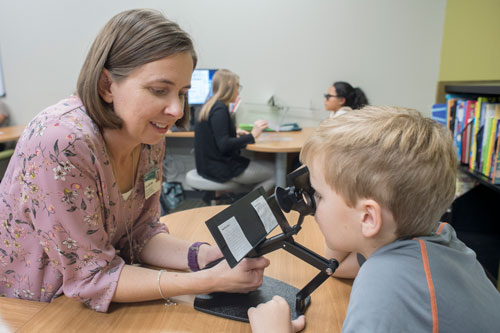



Vision Therapy Clinic School Of Optometry Uab
Vision therapy (also likely in conjunction with glasses) Patching ;Vision Therapy for Strabismus Vision Therapy — strabismus treatment without surgery;Exotropia is a form of strabismus where the eyes are deviated outward It is the opposite of esotropia and usually involves more severe axis deviation than exophoriaPeople with exotropia often experience crossed diplopiaIntermittent exotropia is a fairly common condition "Sensory exotropia" occurs in the presence of poor vision in one eye



Vision Therapy




Strabismus
Vision Therapy — strabismus treatment without surgery;




Vision Therapy Success Story Strabismus Exotropia Eye Turn Outward Vision Therapy Philippines




Strabismus
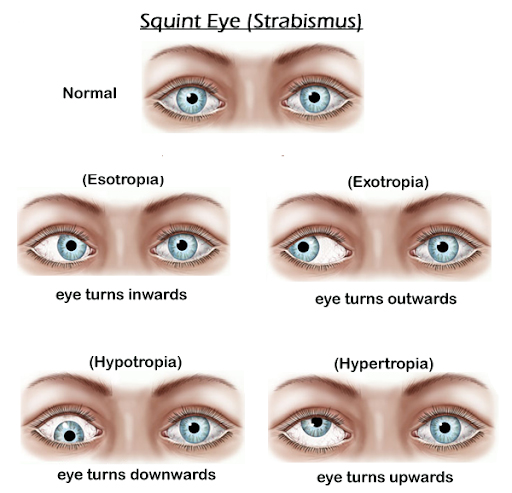



Squint Eye Treatment For Children Pediatric Ophthalmology For Surgery




Four Types Of Strabismus Esotropia Stock Vector Colourbox




Four Circles Vision Therapy Vision Therapy Success Story Daisy Was Diagnosed With Exotropia A Variation Of Strabismus Which A Eye Turns Out When Attempting To Look Straight Ahead Through Her Program
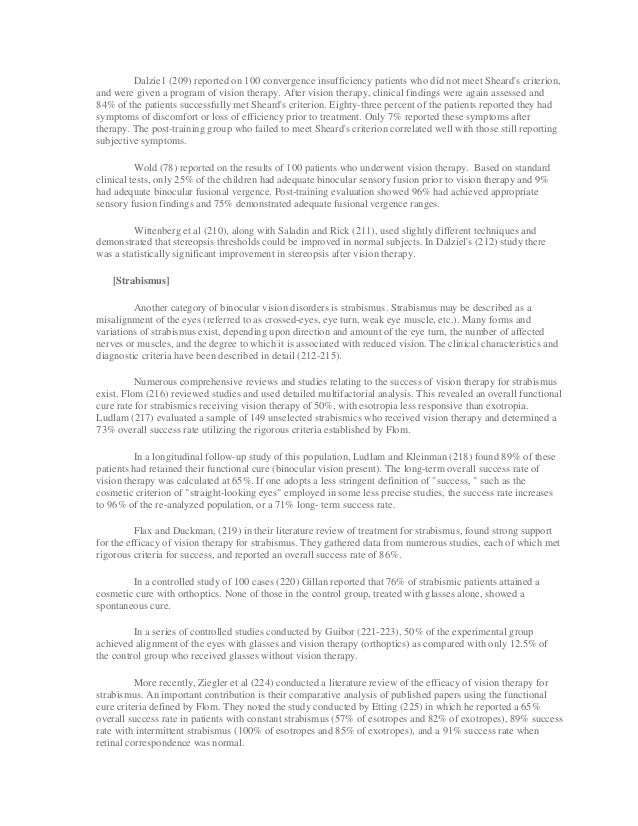



The Effectiveness Of Vision Therapy




Vision Therapy Helps Kids With Strabismus Avoid Surgery
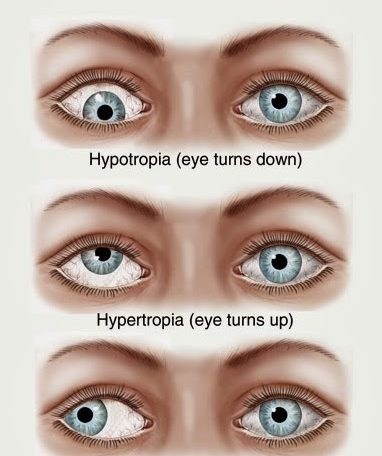



Strabismus False Strabismus Royal Spanish Center



How To Fix A Lazy Eye Amblyopia Treatment In Ithaca Syracuse Binghamton Ny Metro Area Correction W Vision Therapy Eye Patching Surgery For Children And Adults




Esotropia Inward Eye Turn



2




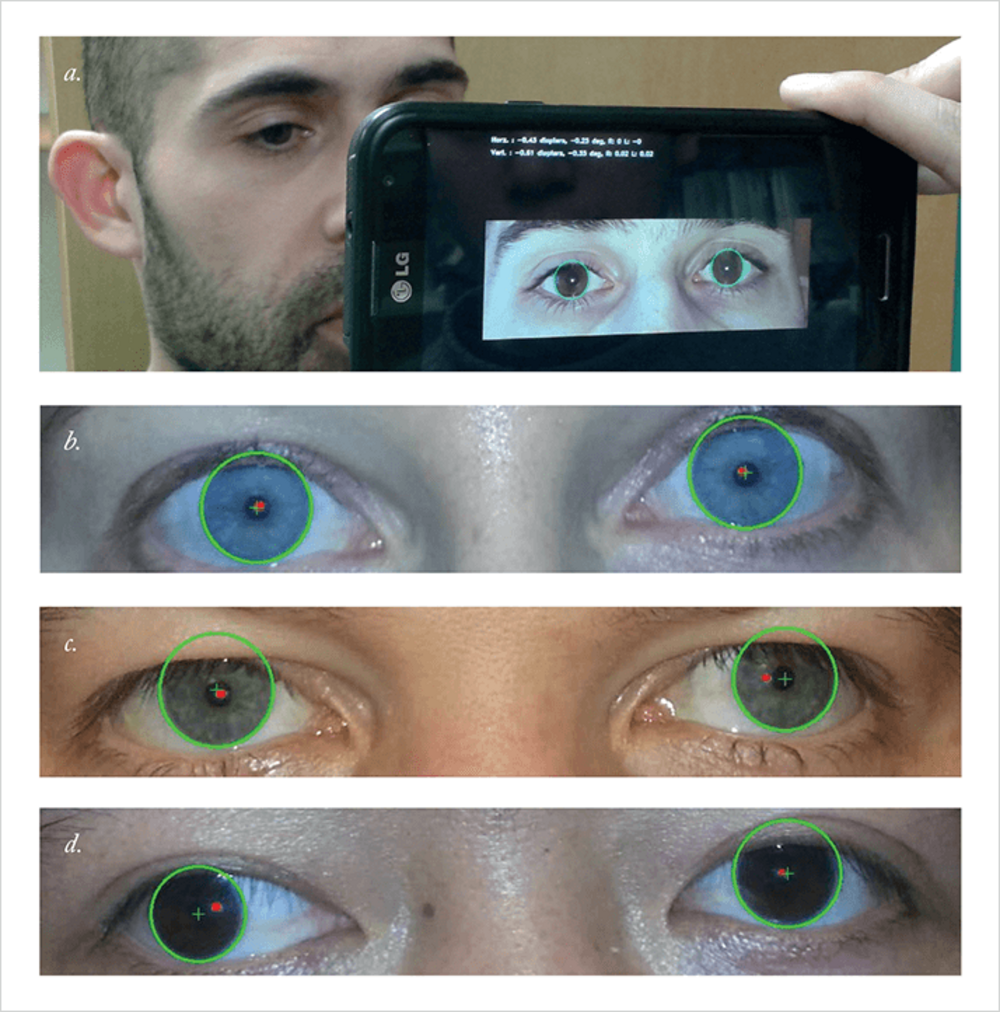



Strabismus Screening Now There S An App For That




How To Treat Crossed Eyes Strabismus Vision Eye Eye Exercises Eye Health
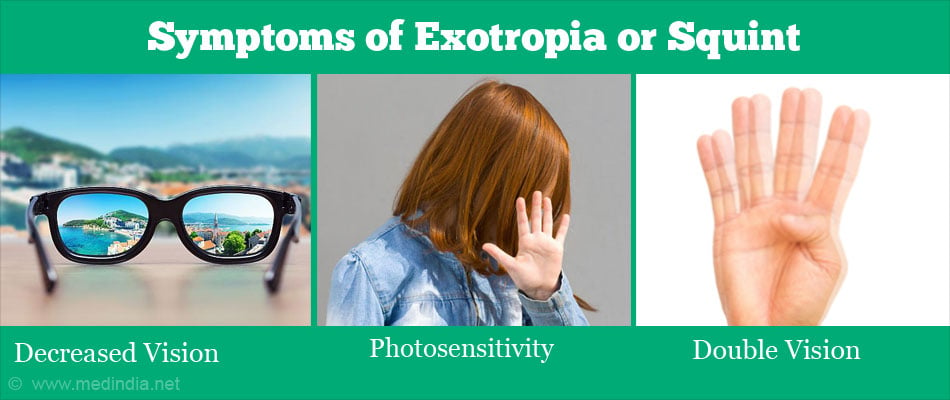



Exotropia Types Symptoms Diagnosis Treatment Prevention




Strabismus Eye Turn Center For Vision Learning



The Basics Of A Strabismus Exam
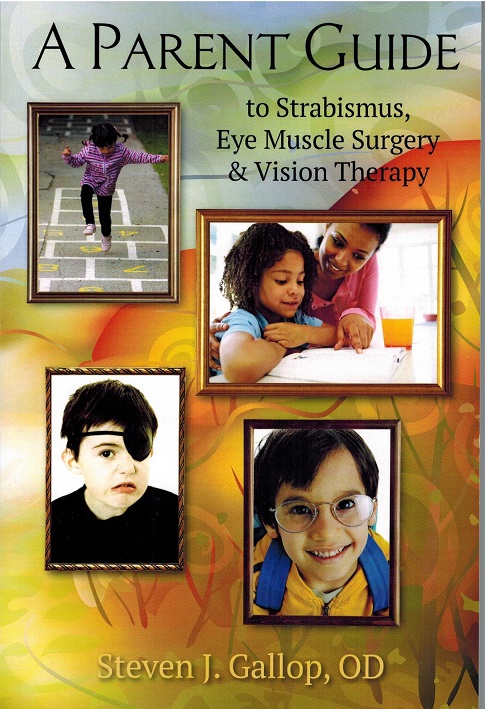



Intro To Dr Gallop S Eye Muscle Surgery Optometrist In Broomall Pa Steve Gallop O D




Strabismus Amblyopia Leukocoria Dr Hessah Alodan Pediatric Opthalmology




Vision Therapy Prosper Family Eyecare And Vision Development Center



Strabismus




What Is Vision Therapy




Strabismus Plymouth Vision Therapy Minnetonka Four Seasons Eye Mn




Strabismus Fixing Aloise S Gaze A Mother S Story Wow Vision Therapy




What Is Strabismus



How Strabismus Affects Reading Ability In Kids




Strabismus Part 2 Treatment Mindsight




Pin By Covd Vision On Strabismus Vision Therapy Vision Therapy Activities Vision Therapy Exercises
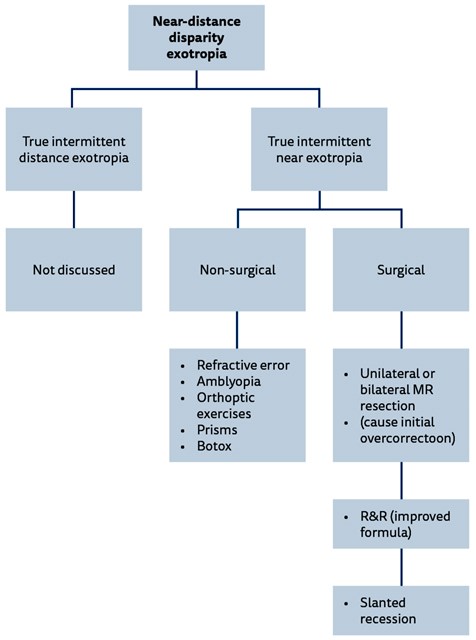



Management Of Squint With Near Distance Angle Disparity Eye News




Non Surgical Correction Of Exotropia Dr Claudia Lee Optometrist




3 Proven Exercises For Strabismus Lazy Eye Selectspecs Glasses Blog
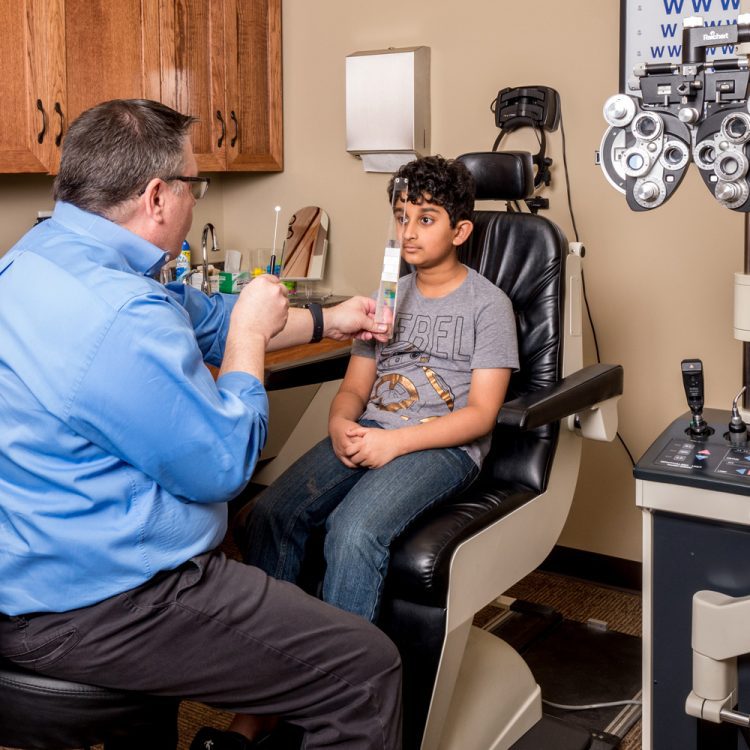



Vision Therapy Family Vision Development Center



Vision Therapy Northwest Eye Care Professionals
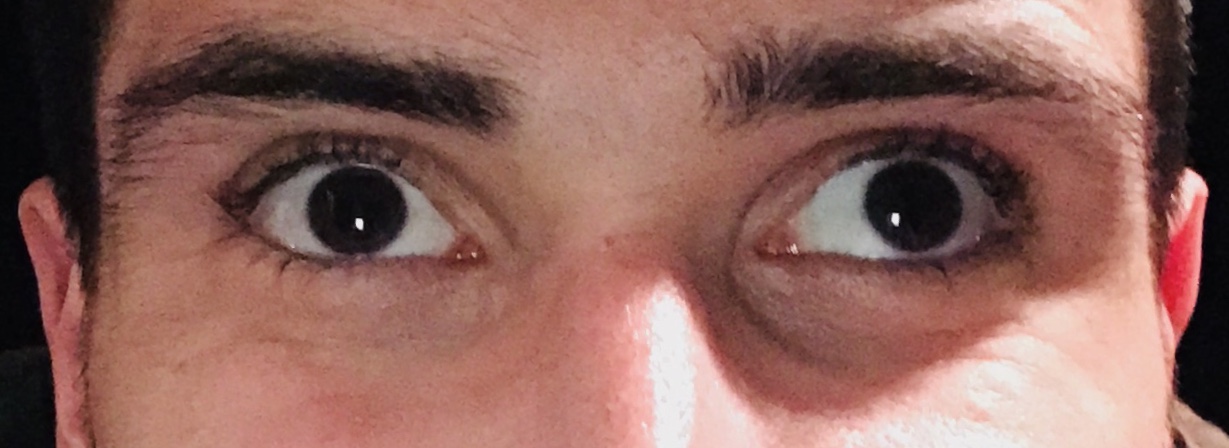



Strabismus Wikipedia




Vision Therapy In Rohnert Park Eye Doctors North Bay Vision Center




Why Do Vision Therapy For Eye Turns Strabismus




3 Proven Exercises For Strabismus Lazy Eye Selectspecs Glasses Blog
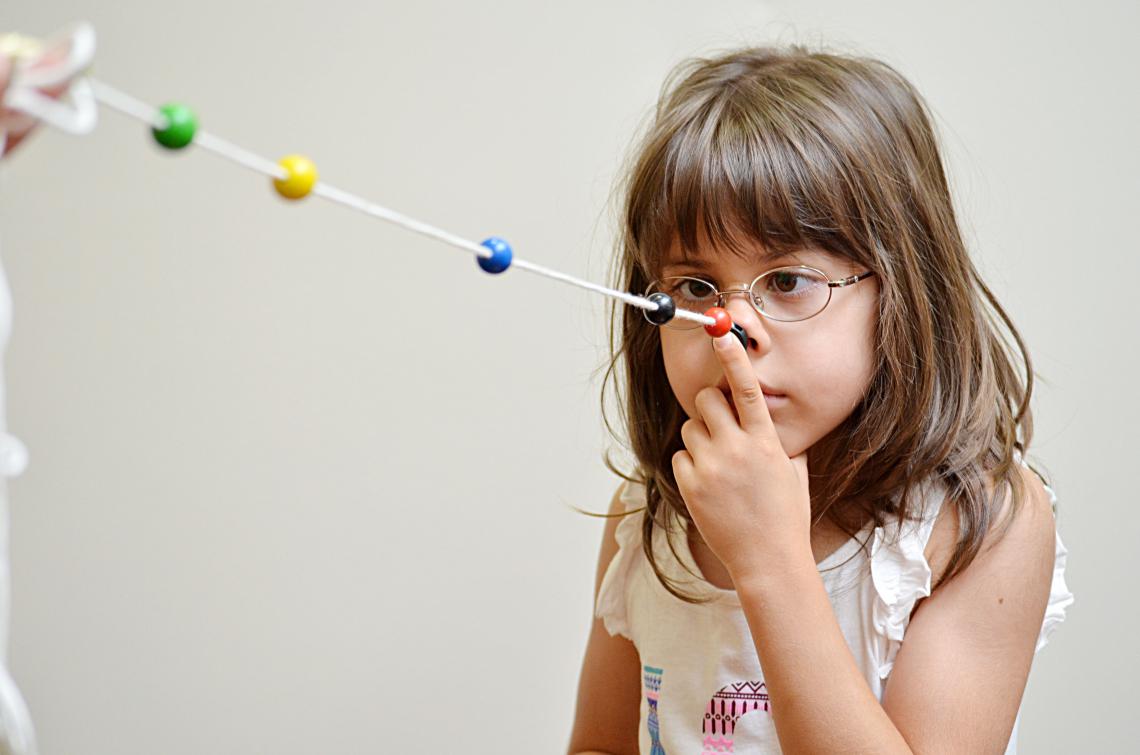



What Is A Brock String




A Patient With 15 26d Of Left Exotropia With Semi Translucent Download Scientific Diagram



Strabismus Non Surgical Cure Rates With Vision Therapy Cook Vision Therapy Center Inc Vision Therapy In Marietta Ga Us




Vision Therapy Philippines At Vision Science Institute A Vision Therapy Success Story Strabismus Eye Misalignment Facebook
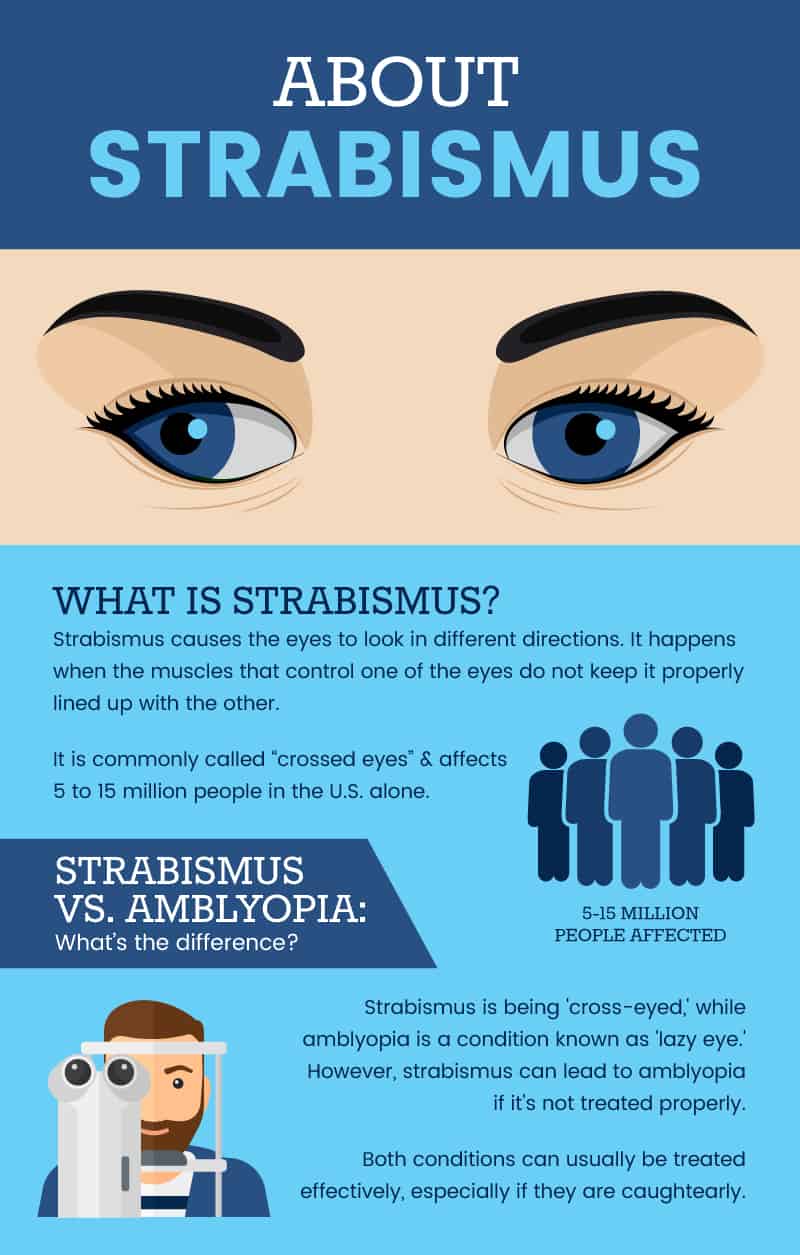



What Does Intermittent Strabismus Mean
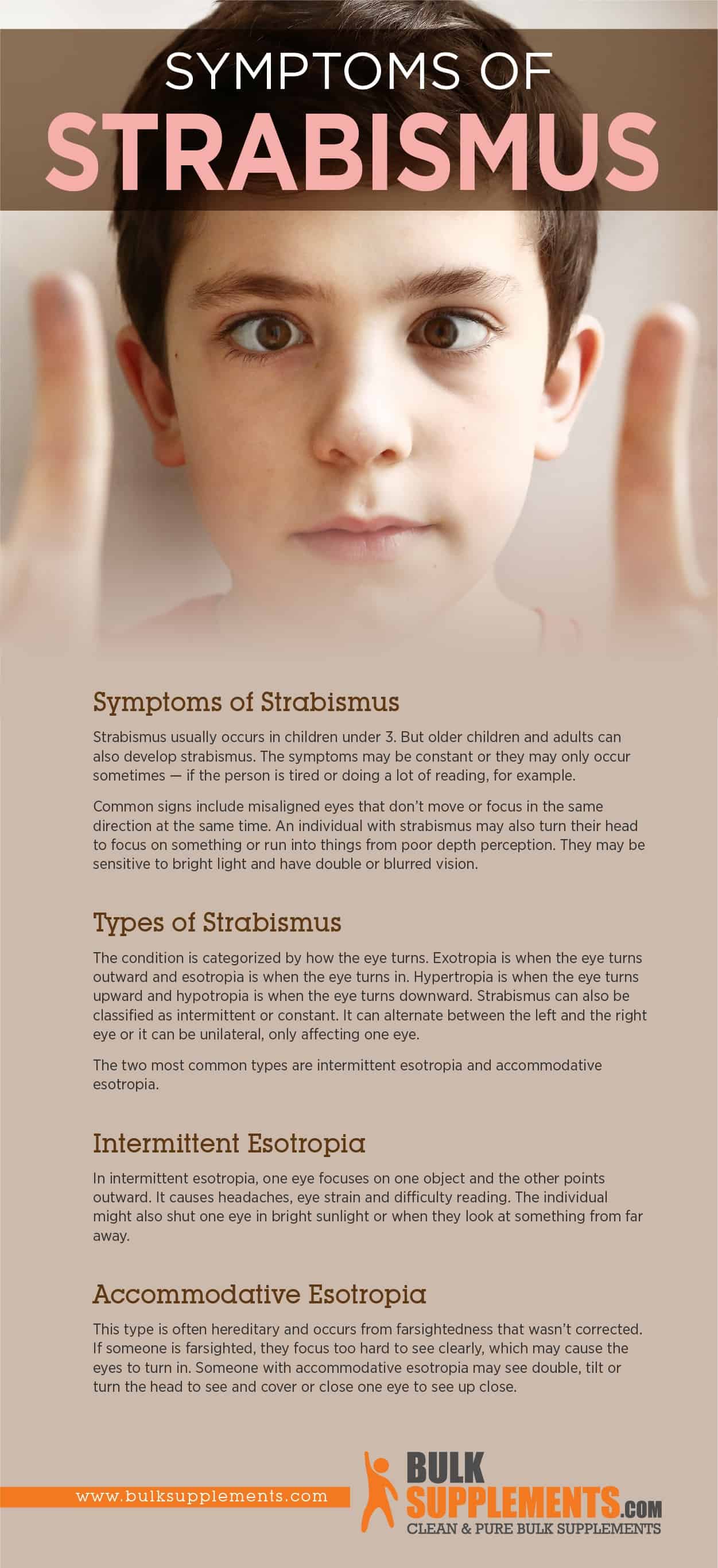



What Is Strabismus Causes Symptoms Treatment




Strabismus And Crossed Eyes Causes And Treatment All About Vision




Exotropia Outward Deviation Of The Eye Prosper Family Eyecare And Vision Development Center
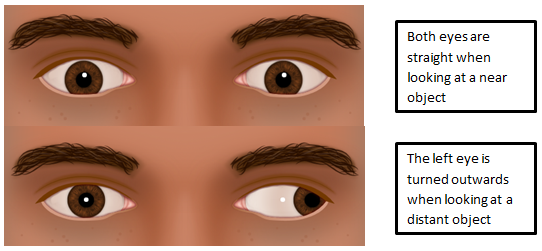



Intermittent Distance Exotropia Hull University Teaching Hospitals Nhs Trust




Pdf Stereopsis Deficiency Treatment Using Virtual Reality Games In Exotropic Candidate For Firefighte




Vision Therapy Success Stories Philip




Vision Therapy Panorama Optometry




Conservative Management Of Concomitant Strabismus Eye News




Strabismus Treatments Without Surgery With Exercises Vision Therapy



1




Exotropia Outward Eye Turn




Strabismus Treatment Gallaway Beckett Vision Therapy New Jersey Philadelphia
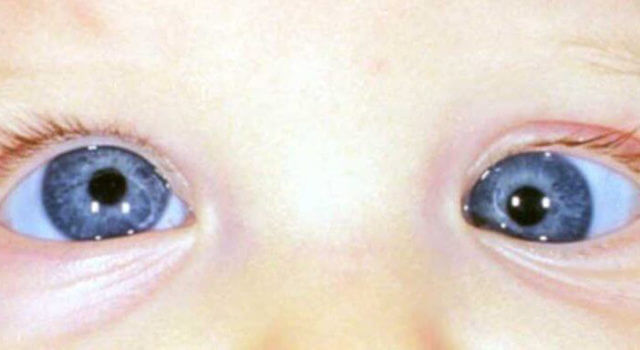



Why Vision Therapy Provides Lasting Correction For Strabismus Eye Turn




Vision Therapy에 있는 핀
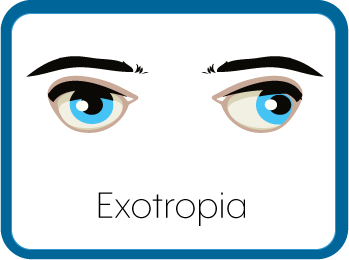



Exotropia




Pdf The Efficacy Of Vision Therapy For Convergence Excess
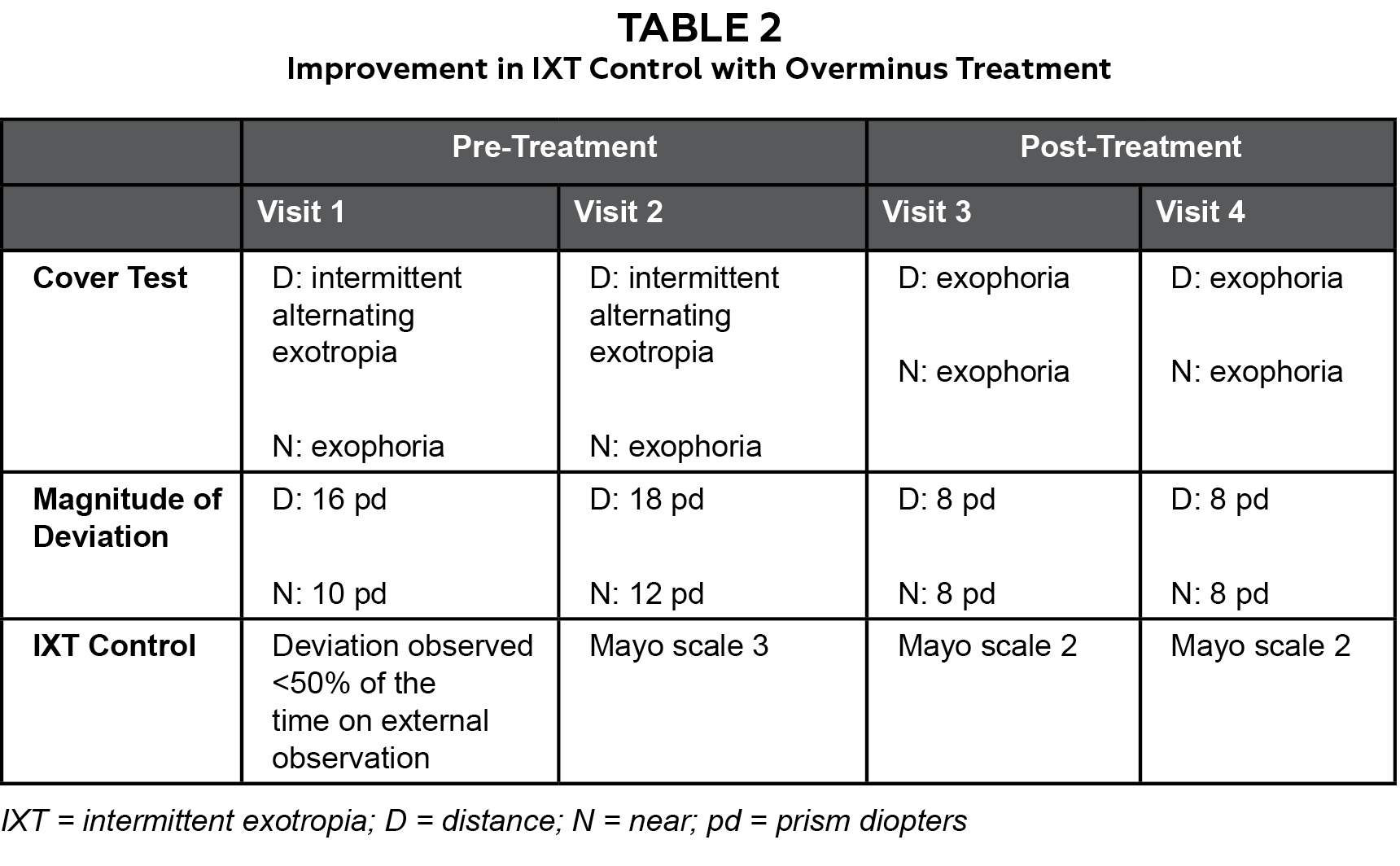



Management Of Intermittent Exotropia Of The Divergence Excess Type A Teaching Case Report The Journal Of Optometric Education




Strabismus Vision Therapy Philippines




How To Fix Exotropia 9 Steps With Pictures Wikihow
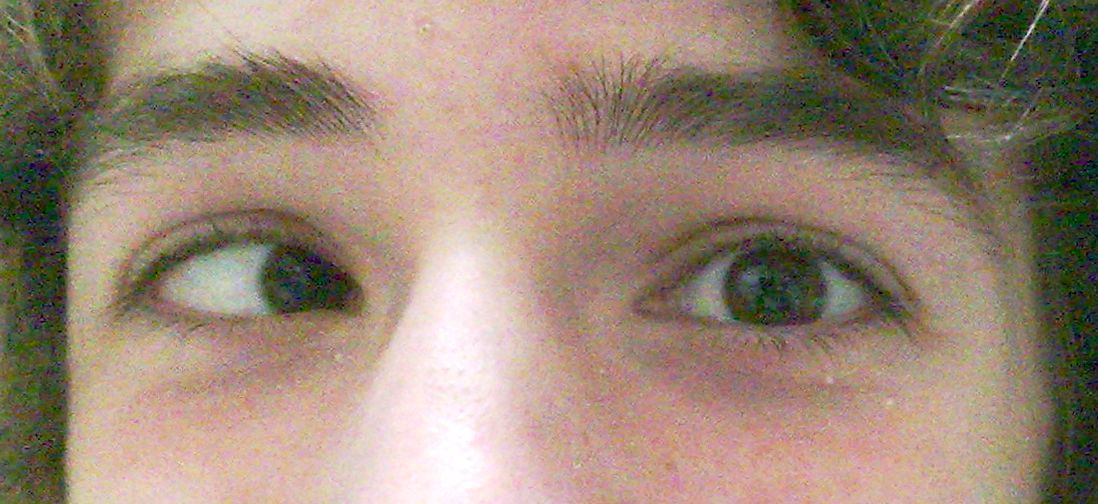



Esotropia Wikipedia




Lesson Unraveling Amblyopia Strabismus Phorias And Tropias




Pdf Vision Therapy For Intermittent Exotropia A Case Series




Guide To Eye Turns Optometrists Org
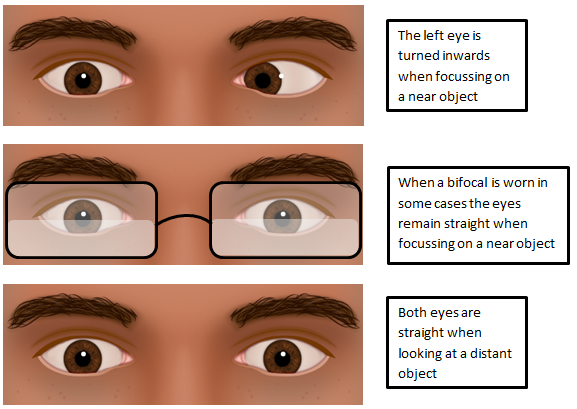



Amblyoplay Intermittent Esotropia Is A Type Of Squint When An Individual Is Looking Beyond 3m No Squint Can Be Seen The Squint Is Only Seen When Focusing On Near Objects Convergence
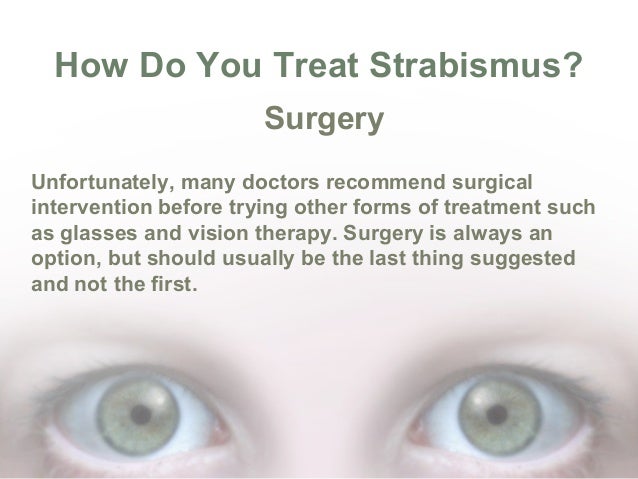



Strabismus Surgery Outcomes




Good News For People With Strabismus Vision Therapy Good News People




How To Fix Exotropia 9 Steps With Pictures Wikihow




Management Of Intermittent Exotropia Of The Divergence Excess Type A Teaching Case Report The Journal Of Optometric Education




Squint Treatment Without Surgery In India Sanjeevan




Vision Therapy For Patients With Strabismus Esotropia Exotropia
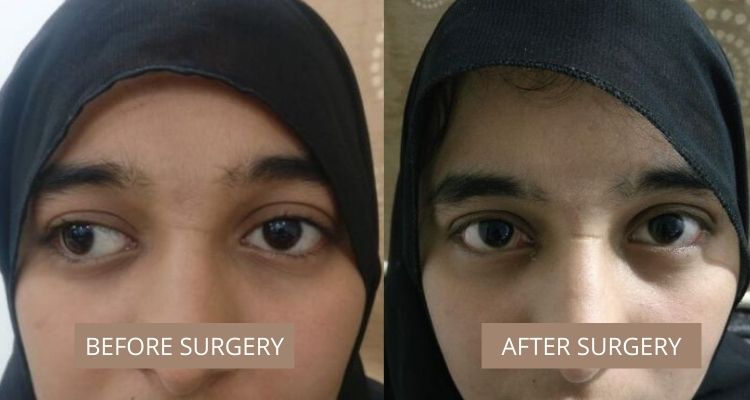



Exotropia Best Squint Treatment In Mumbai Eye Solutions




Vision Therapy Philippines



0 件のコメント:
コメントを投稿